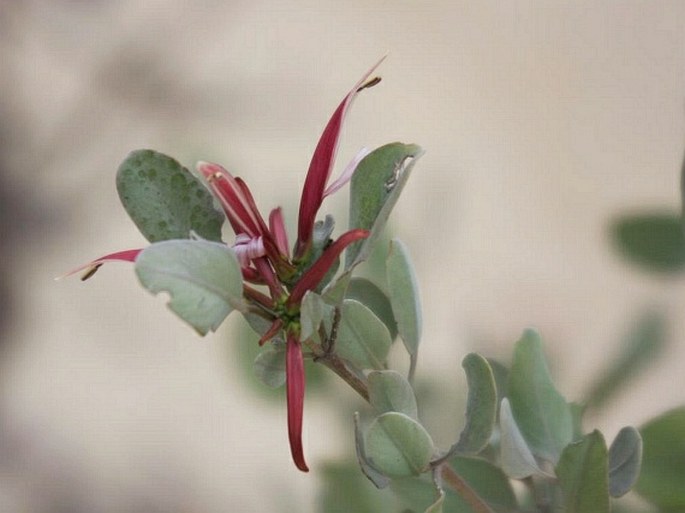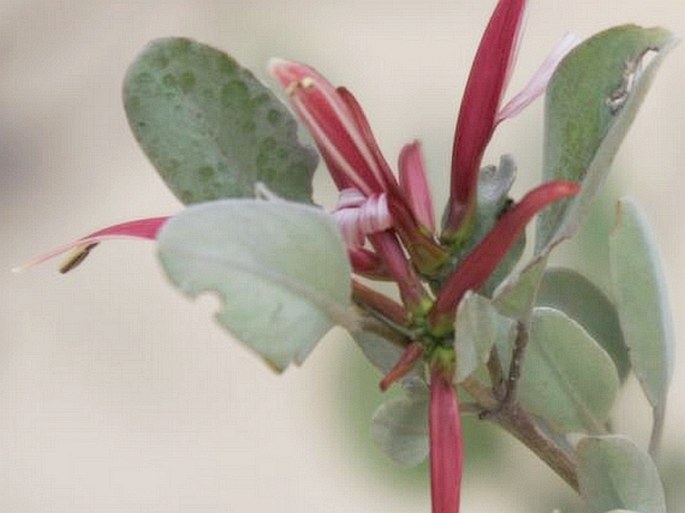Family: Acanthaceae Juss.

Distribution: Endemic to southern Madagascar, in the province of Toliara.
Ecology: It grows on dunes, in sandy flats and thickets, along the coast, at elevations from sea level to 20 m asl. Blooms throughout the year.

Description: Shrubs to 2 m tall; older branches ascending, young densely pubescent. Leaves opposite, petiolate, subsucculent, broadly ovate to broadly elliptic, 14–45 mm long, 10–38 mm wide, 1.1–2.7 times longer than wide, acute at base, rounded at apex, pubescent, grayish green. Inflorescence axillary or terminal, pedunculate spikes, peduncles to 24 mm long; bracts opposite, broadly triangular, 1–2 mm long; flowers sessile, usually more than 2 per spike; calyx 5-lobed, 2–3.5 mm long, lobes ovate to triangular, 0.6–1.8 mm long; corolla maroon to dull red externally, pinkish to whitish internally, (30–)33–47 mm long, 2-labiate, upper lip 20–35 mm long, entire at apex, lower lip spirally coiled, 18–28 mm long; stamens 26–33 mm long, exserted from mouth of corolla but not surpassing upper lip, filaments whitish, style 29–36 mm long. The fruit is a capsule, 18–24 mm long.
Note: The genus contains about 20 species, most of them grow in tropical Africa and Madagascar, 1 species grows in the Arabian Peninsula.

These images were taken in Madagascar, Toliara, Anakao (by Radka Urbančíková, December 2014).


